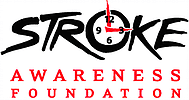 Crying is part of the healing process. That’s what Lincoln Krochmal, MD, tells stroke survivors and caregivers who attend the peer-to-peer counseling sessions and monthly stroke support group he leads at Santa Clara Valley Medical Center (VMC). “People think it’s a weakness to cry. Get it out of your system and get back to work,” he says with conviction.
Crying is part of the healing process. That’s what Lincoln Krochmal, MD, tells stroke survivors and caregivers who attend the peer-to-peer counseling sessions and monthly stroke support group he leads at Santa Clara Valley Medical Center (VMC). “People think it’s a weakness to cry. Get it out of your system and get back to work,” he says with conviction.
Dr. K cried a lot in the weeks following his hemorrhagic stroke in September 2010. As the CEO of a pharmaceutical company and a Board certified dermatologist, he was accustomed to being in control of his fast-paced life. “I was a Type A,” he says. Becoming dependent on others was one of the hardest realities Dr. K had to accept. “It was terrible,” he admits. He needed help with everything from eating to getting dressed, and he was conined to a wheelchair for the first year of his recovery.
On the morning of his stroke, Dr. K was standing at the bathroom sink when he was overcome with dizziness and felt lightheaded. His wife Lana, an ER nurse, noticed him grab the sink and she came immediately to his side. She detected slurred speech and helped him to the loor before calling 911. Dr. K was admitted to the Comprehensive Stroke Center at Good Samaritan Hospital where he was evaluated by Stroke Center Director Dr. Harmeet Sachdev and neurosurgeon Dr. David Yeh and treated by the neurocritical care team. Dr. K was medically stabilized and did not require surgery. He soon began an intensive 7-week rehabilitation program that included speech, occupational, and physical therapy at VMC’s renowned Rehabilitation Center.
Four and a half years later, Dr. K has made remarkable progress. He walks with a cane and strives to do something new every day. “I refuse to let the stroke win. I refuse to let this defeat me,” he says. Dr. K and Lana emphasize that message in presentations they make to stroke survivors, caregivers, medical practitioners, and therapists. Dr. K is also back to work. He was recently named chief medical officer for a clinical stage pharmaceutical company and he is writing a book, Working My Way Back to Me: My view from the other side of the railing, that chronicles his journey living with stroke.



